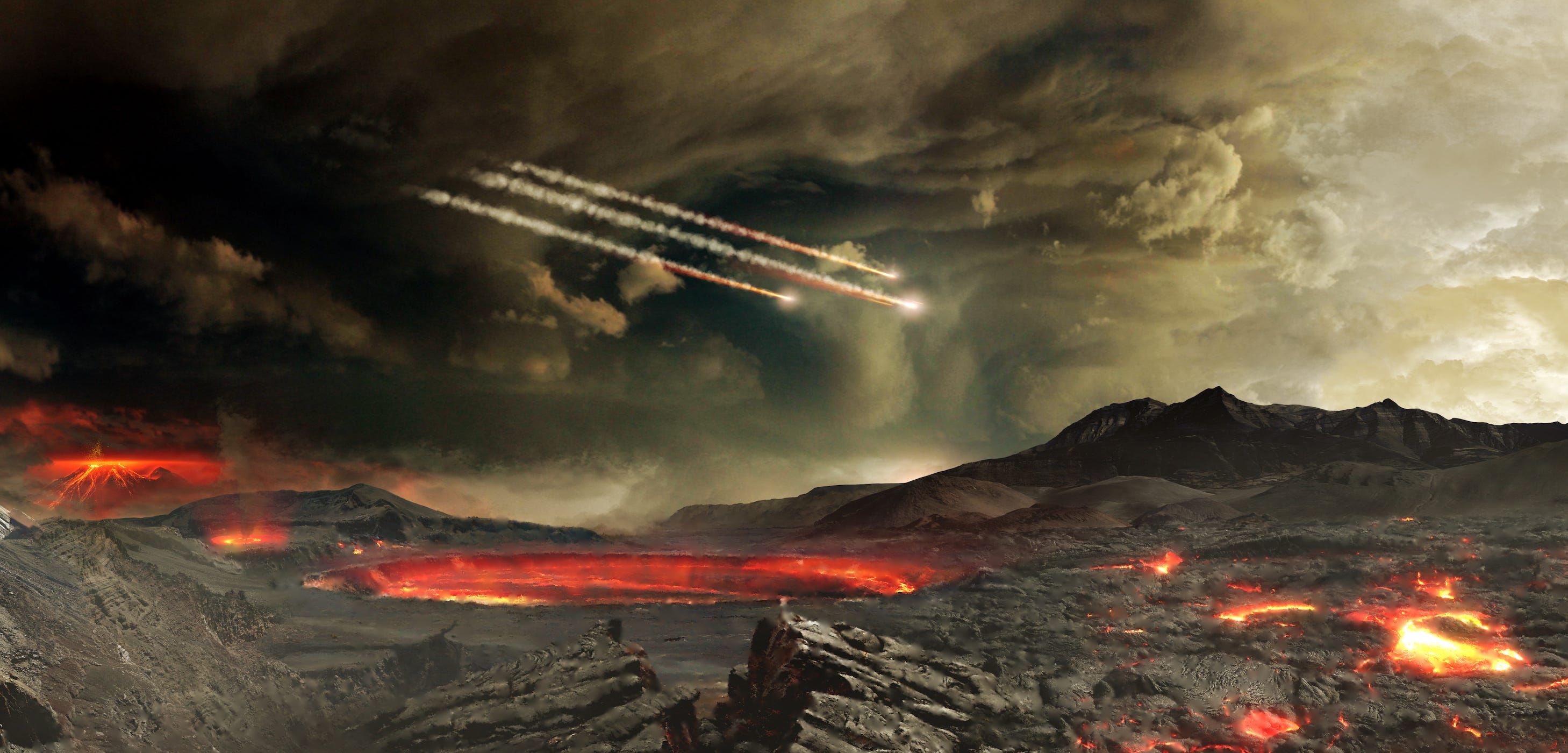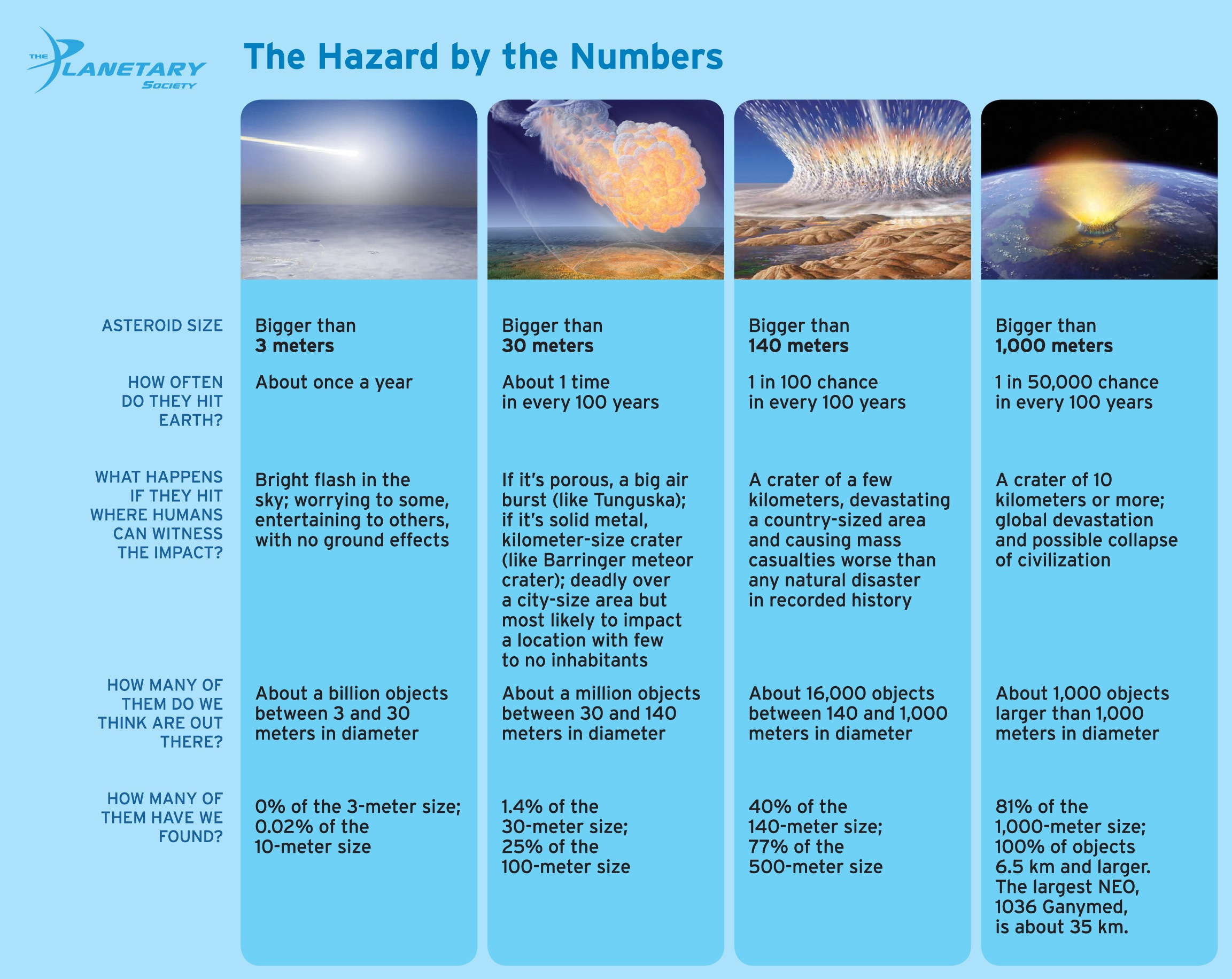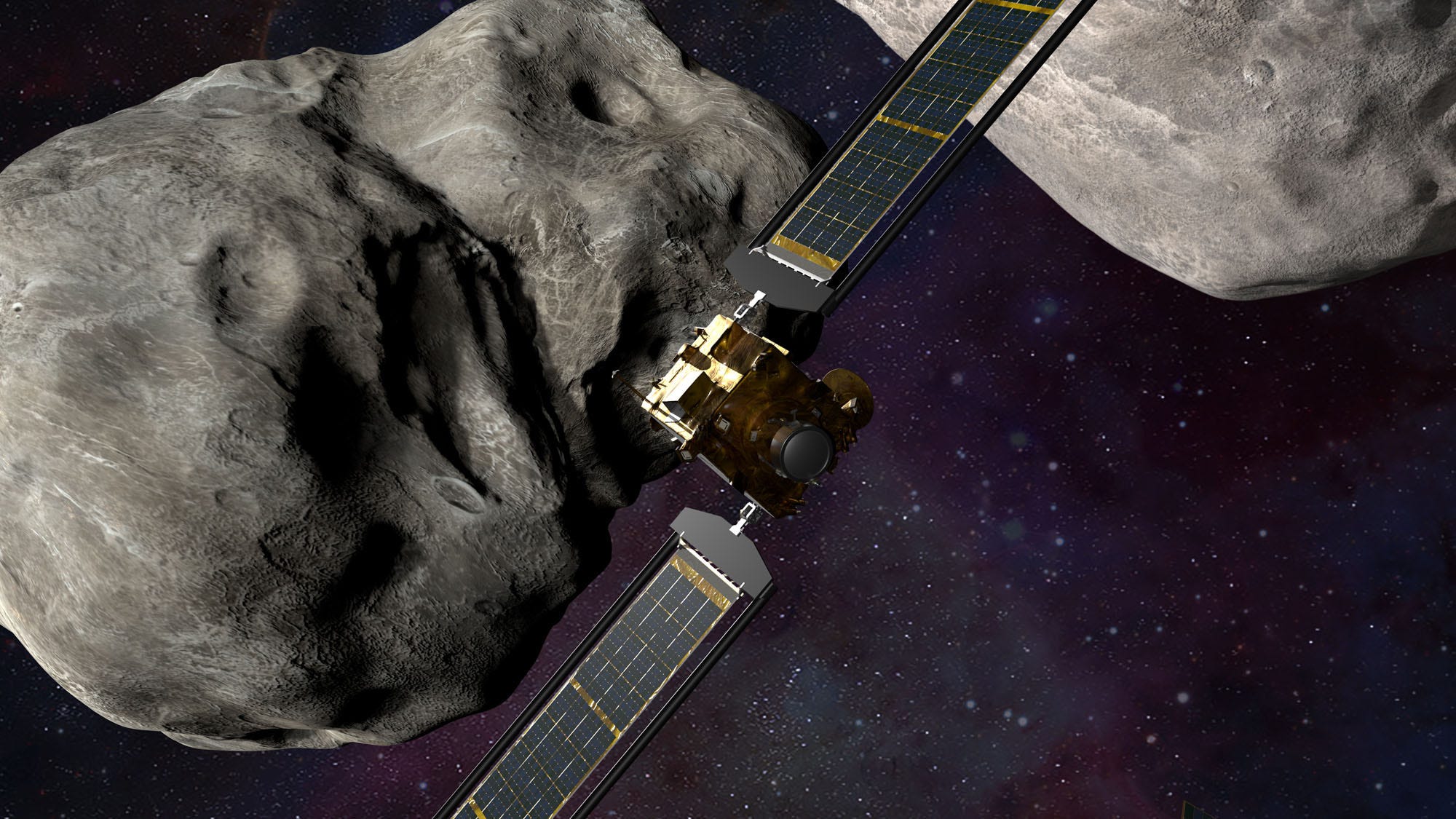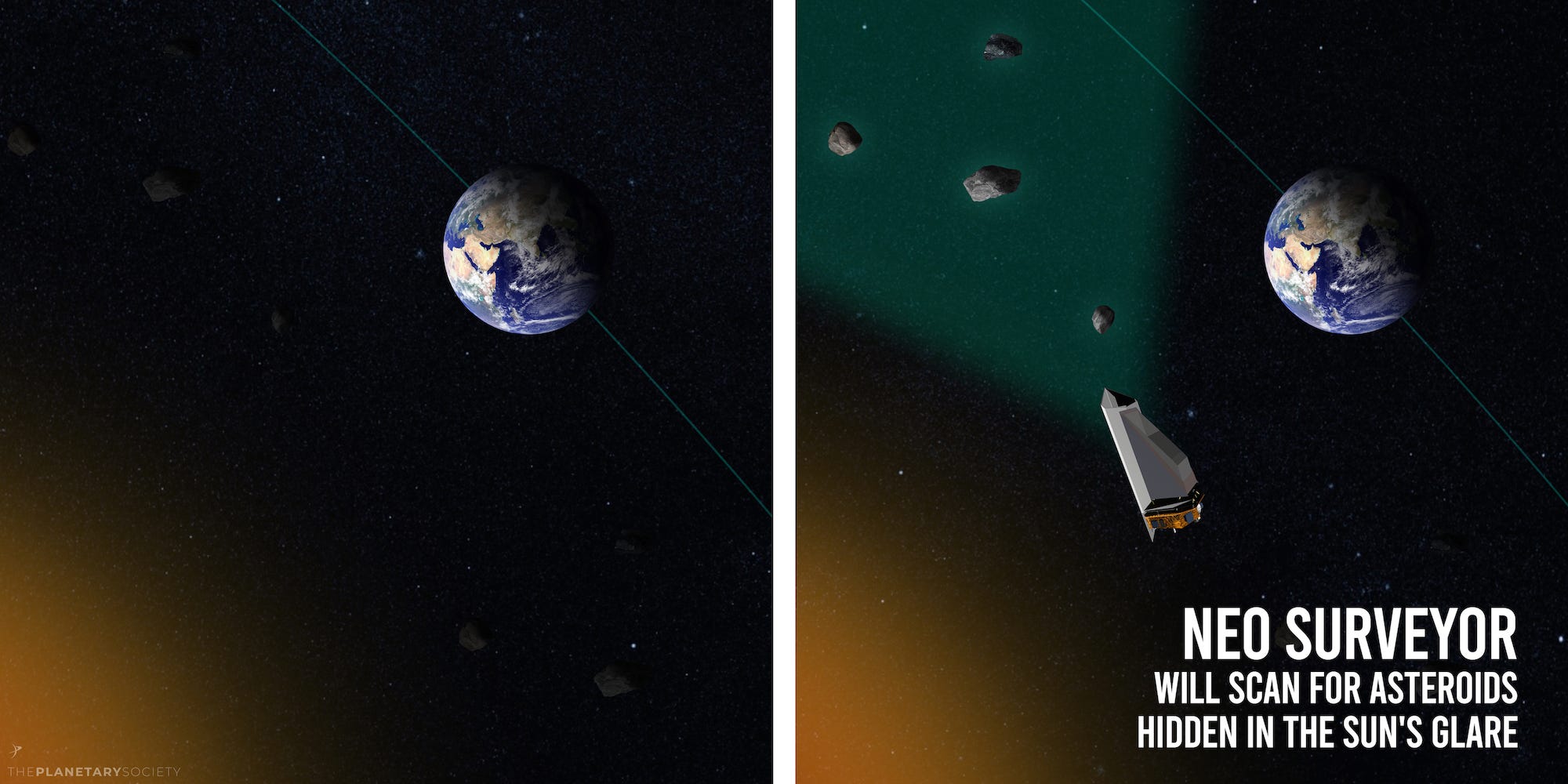When to worry about an asteroid hitting Earth
And how to treat sensationalist headlines.

We’re living in what is perhaps the most peaceful time in our solar system’s history. It’s hard to imagine the period roughly 4 billion years ago when our planet was being bombarded by huge asteroids and comets, an event scientists think brought water and carbon-rich materials to Earth and helped kickstart life soon after.
After this period, the solar system became calmer. Today most of what hits Earth’s atmosphere is small enough—dust to boulder sized—that it quickly evaporates in our atmosphere. But there are still asteroids and comets that have orbits that pass near Earth. These are called near-Earth objects, or NEOs.
The chances of large impacts from NEOs capable of causing widespread damage at any given time are small but they aren’t zero.
Look no further than our Moon for evidence. About 108 million years ago, an asteroid or comet impacted the Moon and formed the 86 kilometers wide Tycho crater—a bright feature you can see from Earth! The dinosaurs would’ve been alive and thriving to witness this event, only to be wiped out alongside roughly 70% of life on Earth 42 million years later when an asteroid 5 to 15 kilometers wide struck home and caused global climate change.
While space rocks of this magnitude are likely to hit Earth only every hundred million years or so, NEOs 50 to 100 meters across can strike much faster, roughly every thousand years, and can destroy a large city or level similarly large areas, and also lead to ecological destruction.

How to treat sensationalist headlines regarding asteroid strikes
Unlike the dinosaurs, we can find and track hazardous NEOs and calculate the likelihood of them impacting Earth years, decades and even centuries before they do, giving us time to deflect them. We call this effort to save our planet from major impacts “planetary defense.” It is the reason there isn’t a need to panic about an asteroid strike. Clickbaity media headlines about small asteroids flying past Earth or entering our atmosphere make the problem sound more alarming than it is.
“There are no known (sizable) asteroids on a collision course with Earth for the foreseeable future. NASA always makes information about NEOs available at cneos.jpl.nasa.gov/sentry,” said Nancy Chabot, a planetary scientist at Johns Hopkins Applied Physics Laboratory.
If and when we learn that a sizable asteroid will impact Earth for real, you can rest assured that NASA and other such space organizations globally will be sending out press releases and issuing ongoing updates on all their channels. That being said, the need to plan and prepare to avoid future asteroid strikes is now, and we’re already lagging behind.
Why we need to prepare for an incoming asteroid now
We simply don’t know how many city-destroying NEOs are out there lurking in space and targeting Earth. While popular movies have brought to public attention the potential threat of an impact, it took nearly 25 years to convince policymakers at space agencies and organizations around the world that investing resources to identify, track and deflect NEOs is necessary. And even then, significant funding began only in the last decade when the U.S. White House, catalyzed by a key report from the National Research Council, proposed a five-fold fund increase to discover NEOs.
Increased U.S. funding for planetary defense also led to the launch of the Double Asteroid Redirection Test (DART) mission in 2021. Later this year in September, it will become the world’s first spacecraft to smash into an asteroid to change its trajectory and help test our deflection abilities. China is also planning an asteroid impact mission, launching in 2025, to test changing its trajectory.

The next major upcoming mission dedicated to planetary defense is NEO Surveyor, NASA’s long-planned space telescope aiming to discover at least 90% of the city-killer NEOs. Terrestrial telescopes aren’t as well suited for this task because of limiting factors, such as weather, the Sun’s interference and the inflating number of satellites. The 2023-2032 Planetary Science Decadal Survey, a report produced every 10 years by the U.S. scientific community to guide future NASA missions, includes planetary defense as a theme for the first time and recommends NASA complete the NEO Surveyor mission on time. And yet NASA’s FY 2023 presidential budget request proposed a $100 million cut to the mission, delaying its launch to 2028 at best.
This is a setback because taking all the necessary steps for identifying asteroids and predicting if and when they will strike Earth is vital to adequately deflecting them. No other space agencies are currently planning to build such a telescope. Despite only barely beginning to recover from a pandemic, we haven’t internalized that low-probability yet high-impact events can catch us by surprise.
Chabot, who is also a project scientist for the DART mission, stressed the importance of warning time that missions like NEO Surveyor afford us. “Many movies have the plot line that an impact is happening very soon and then the characters scramble to try to prevent it. But a little bit of sustained effort now to find all the asteroids is key to not being in that situation, and that is the foundation of a good planetary defense strategy, starting with missions like NEO Surveyor.”

What The Planetary Society is doing for planetary defense
Since 2020, Planetary Society members and supporters have sent letters to their representatives in government urging them to fund NEO Surveyor for a 2025 launch, and the mission has been a key talking point in the Society’s annual Day of Action congressional visits. NASA's 2021 budget partially met that request, and the agency approved the mission for further development in June 2021. The FY 2022 budget was even better; The Planetary Society helped secure the $143 million necessary to move NEO Surveyor forward. But the FY 2023 budget request sets the mission back again by slashing funding and delaying the mission to the late 2020s. The Planetary Society will work to reverse this cut in 2023.
The Planetary Society has also been funding astronomers across the globe for 24 years as part of the Shoemaker Grants to find, track and characterize NEOs. Separately, The Planetary Society recently awarded a $44,842 grant to a Serbian team to develop and test a novel method to determine the physical properties of as many as 150 NEOs. Knowing the physical nature of NEOs is crucial to building effective deflection technologies. Missions like DART are just the beginning; we need to test and build more such technologies.
So, while we needn’t lose sleep over a large asteroid impacting Earth anytime soon, we should most certainly care about it and prepare like humanity will depend on it. Because one day, it will.
Originally published at The Planetary Society.
Update: I’m honored that this article was shared by the UN’s official Asteroid Day Twitter account.
→ Browse the Blog | About | Donate ♡
